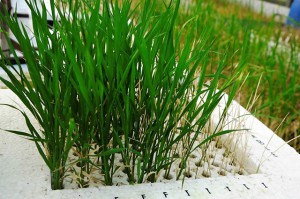To mitigate the impacts of climate change on rice production and food security, the Department of Agriculture (DA)-PhilRice and the International Rice Research Institute (IRRI) are developing varieties that could withstand multiple biotic and abiotic stresses. 
The collaborative project titled, ‘Accelerating the development and adoption of next-generation (NextGen) rice varieties for major ecosystems in the Philippines’ aims to fast-track the introduction and adoption of higher yielding inbred and hybrid rice varieties resistant to major pests and diseases and tolerant to adverse environments.
To help the country achieve food security, the project targets to produce higher yields by more than 5% of previous varieties, using marker-assisted breeding and selection, multi-location testing, increased breeder/foundation seed production and dissemination.
Conventionally, it takes 6 years of breeding work, 3 years of testing, and 2 years of commercial seed production before farmers can plant a new variety.
“The project would help shorten the breeding time to produce new varieties faster and make them accessible to rice farmers,” said Thelma F. Padolina, senior research fellow at PhilRice.
Multi-location trials are done in all major irrigated and rainfed rice-growing regions in the country under the supervision of DA-RFOs and state colleges and universities. Adaption trials are being done in farmer-partners’ fields.
“Yield trials in farmers’ fields will help them (farmers) see how improved varieties perform in their (farmers) area,” said Padolina.
In its recent assessment and planning workshop held in Subic Zambales, 7-11 June, Dr. Georgina Vergara, IRRI scientist, reported that as of 2014, the project has nominated 766 entries for multi-location environment testing (MET). Among the nominated entries, 206 lines were PhilRice-bred, 488 IRRI lines and 72 GSR lines compared with eight check varieties.
The Rice Technical Working Group (RTWG) also approved 24 new promising inbreds and hybrids developed by the project.
According to Dr. Vergara, more than 2,000 lines were screened for submergence, 12,000 for salinity, and 80 lines for drought in 2014.
The project is an initiative under the Food Staples Sufficiency Program of DA being implemented jointly with PhilRice and IRRI in partnership with UP Los Baños, DA RFOs, state colleges and universities, LGUs, and rice farmers.




